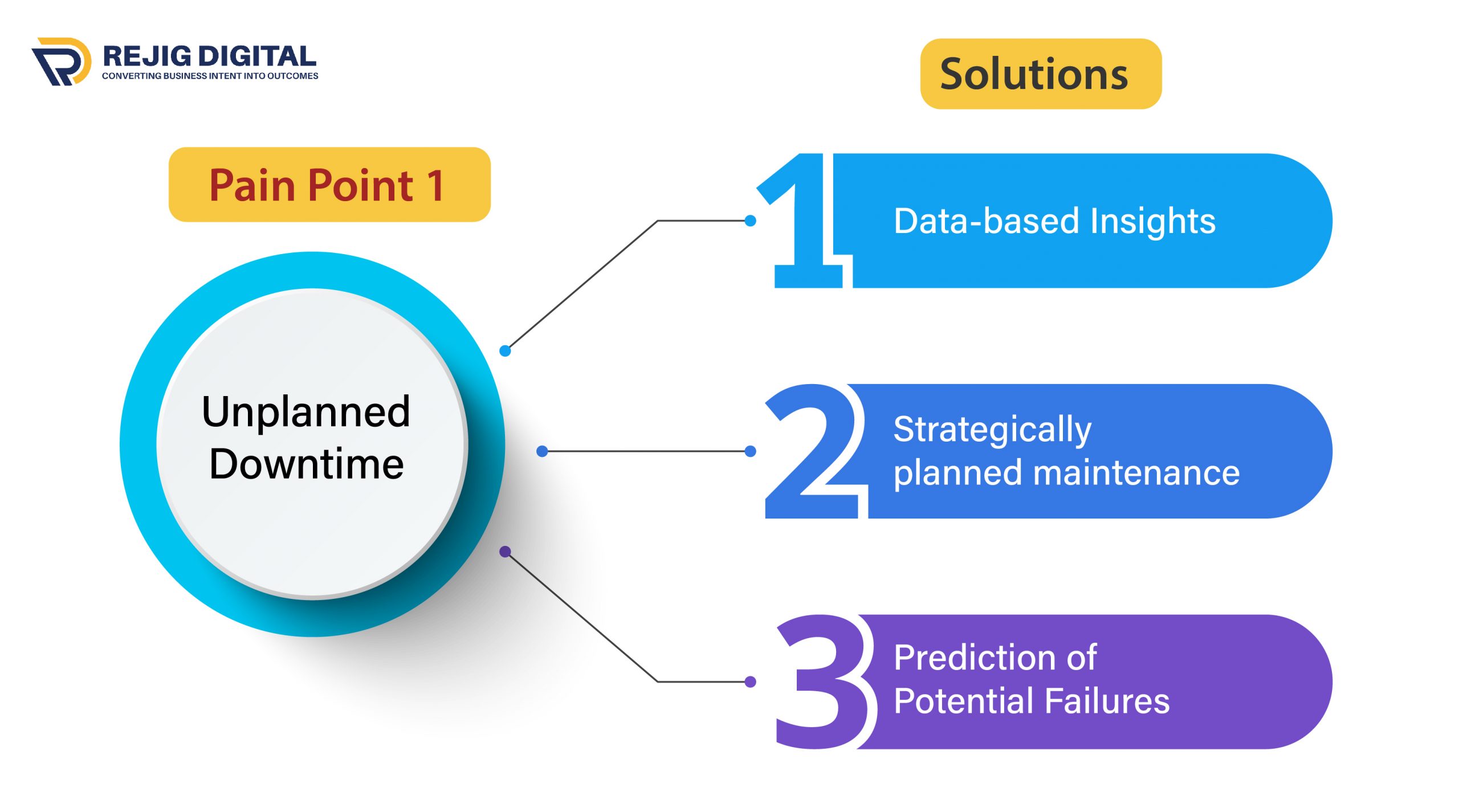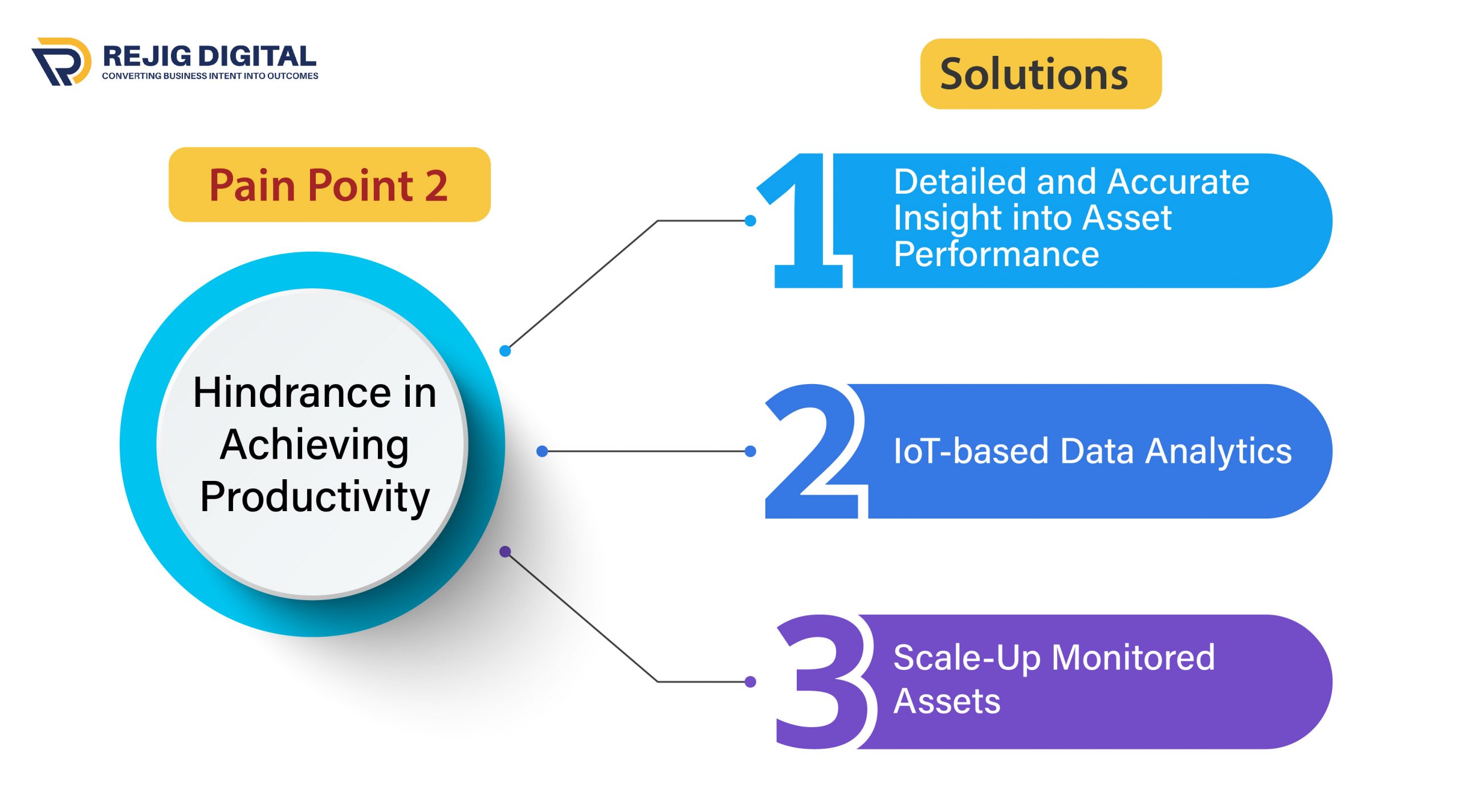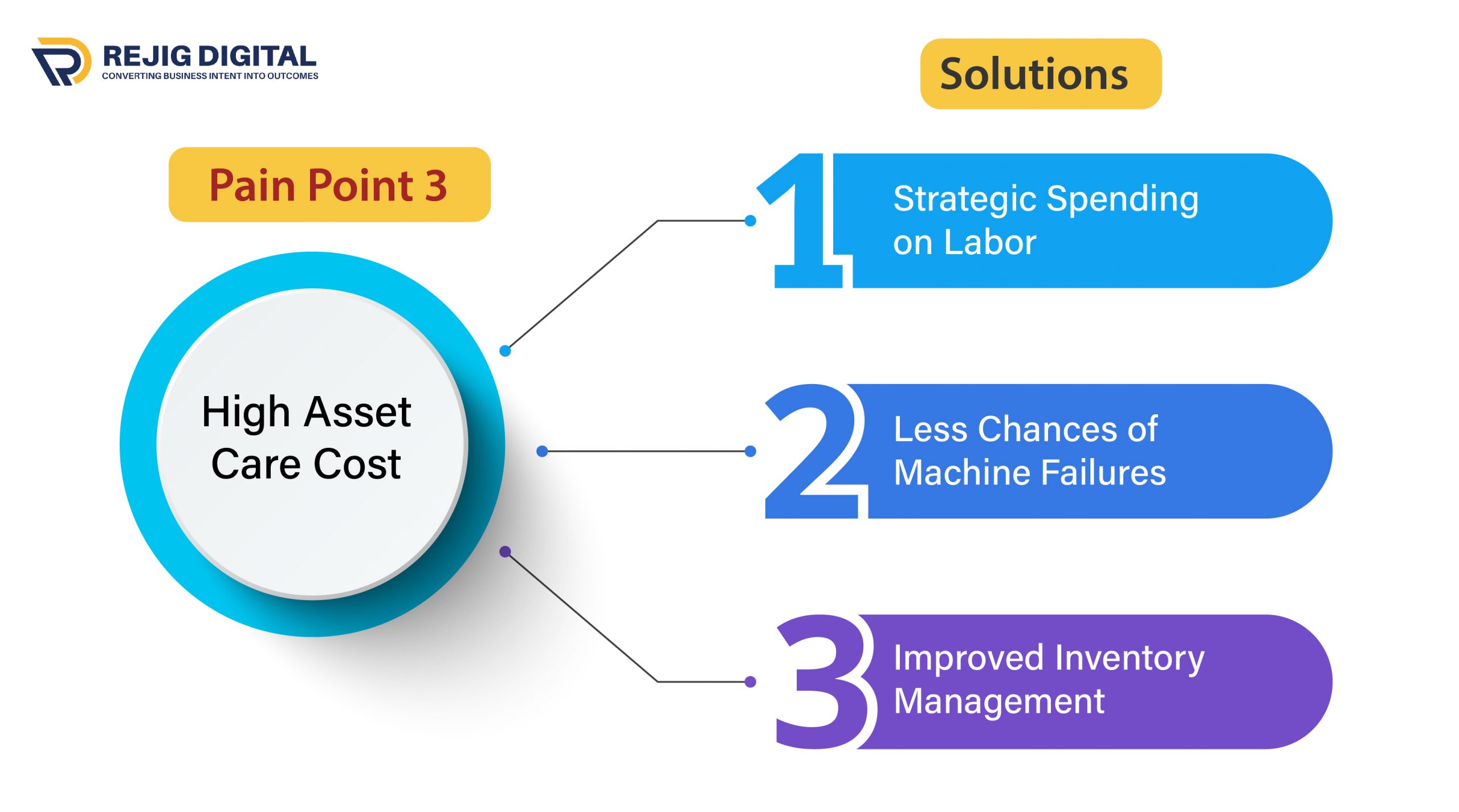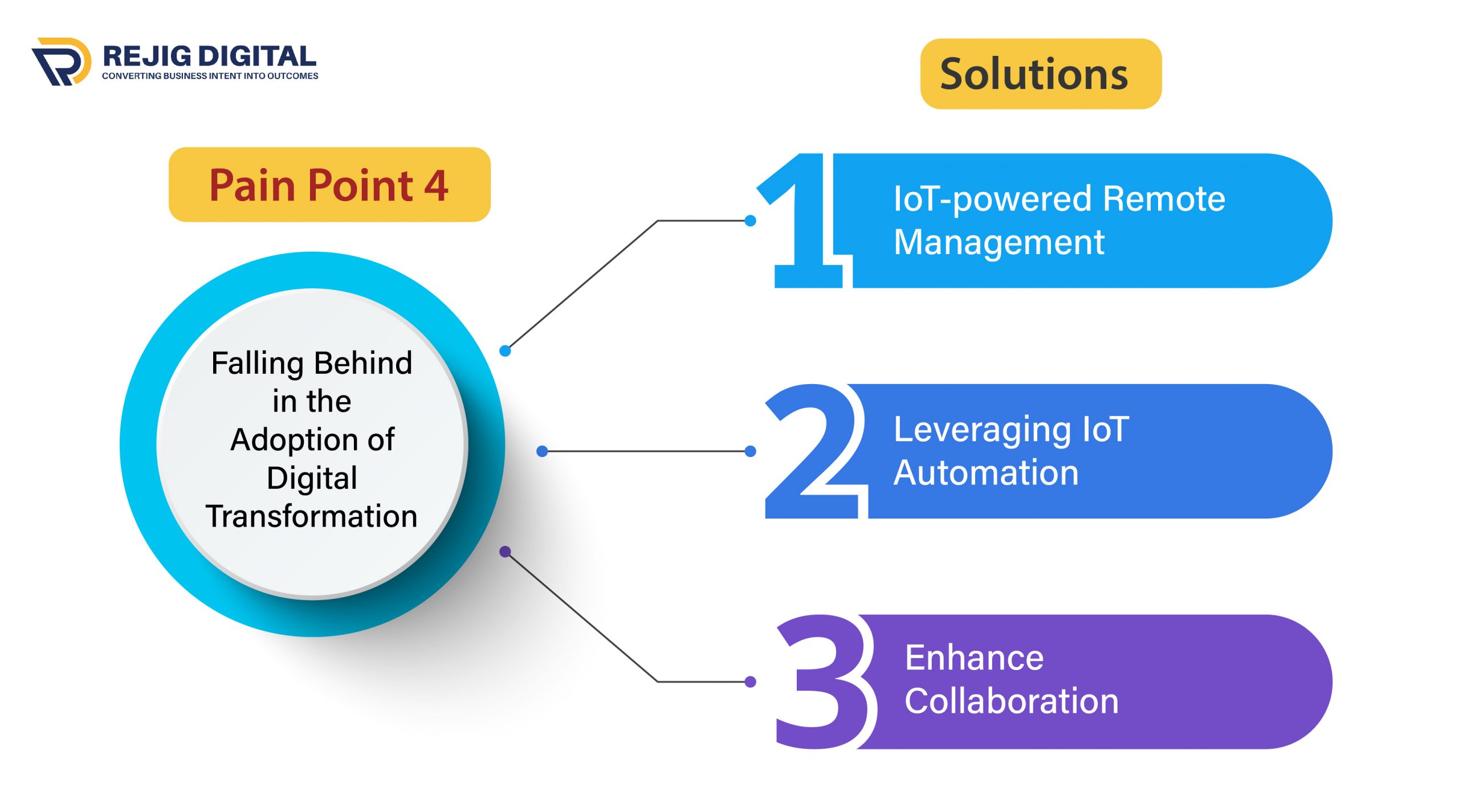The manufacturing industry has always faced various challenges, including production inefficiencies, quality control issues, and supply chain disruptions. In recent years, IoT in manufacturing industry has emerged as a solution to many of these challenges. Whether it’s sensors or wearables which provide real-time data on machine performance that enables manufacturers to optimise their production processes and reduce waste.
Similarly, in many ways, IoT in manufacturing industry has emerged as a powerful tool, enabling manufacturers to improve their operations, reduce costs, and stay competitive in an increasingly digital world.
Let’s see ahead some of the core pain points of the manufacturing sector and simultaneous IoT solutions for manufacturers.
Pain Point 1: Unplanned Downtime

Unplanned downtime in a manufacturing unit usually lasts for one full day – even in some cases -multiple days. As a result, it impacts the production outputs and causes supply chain disruption. The unexpected downtime can cause machine failures which result in serious issues.
Apart from delaying the core process, unexpected downtime can negatively affect employee morale and workplace satisfaction. The chaotic environment of the manufacturing unit can make workers unhappy with their work. Therefore, eliminating unplanned downtime can boost employee morale.
To reduce downtime in production processes, it is better to opt for preventive strategies through predictive maintenance. Utilising machine data makes can decrease unexpected asset failure which can improve the resiliency of the supply chain.
The IoT-powered predictive maintenance can reduce downtime to help achieve production goals in the following ways:
Solution
-
Data-based Insights
IoT sensors can constantly monitor critical assets and collect abundant data. The generated data gives insights into machine performance. Apart from giving information about maintenance, data-driven insights also optimise routine procedures.
-
Strategically planned maintenance
As IoT collects real-time data which provides accurate insights and helps in making correct analyses. It further facilitates asset maintenance whenever a sudden breakdown of the machine happens. Hence, it saves time, money, and energy on scheduled strategies for maintenance.
-
Prediction of Potential Failures
IoT can drive predictive maintenance before even failure occurs. Asset monitoring via IoT allows personnel to address issues early which prevents further escalation. As a result, enterprises can save overtime costs and sudden major repairing of the machines.
Pain Point-2: Hindrance in Achieving Productivity

Despite running a machine to its full capacity, there are times enterprises aren’t able to scale up production. Issues like missing production targets, increasing costs, and losing shelf space can hamper the overall productivity of the manufacturing unit and affect revenue. The shortfall in productivity also leads to a decline in product quality and a lack of consistency within the production process.
Such productivity gaps can be addressed by real-time machine insights which can balance the asset’s lifecycle with output. In addition, companies can opt for condition-based monitoring to identify issues that are responsible for lower quality and output. Enterprises can run machines smarter for the long term which facilitates a boost in production capacity without adding new equipment.
Let’s see how condition monitoring can offer suitable IoT solutions for manufacturing that can boost operational efficiency.
Solutions
-
Detailed and Accurate Insight into Asset Performance
IoT-based predictive maintenance collects valuable data which are even impossible for workers to gather on their own. It helps in uncovering issues that might’ve been missed otherwise. Data on an asset’s historical performance provides information on what issues could arise into bigger problems in the future.
-
IoT-based Data Analytics
The constant asset monitoring collects a large library of data. With data analytics, the achieved information is analysed and turned into insights which notify teams about problems in machines. Hence, whenever an issue arises, on-site personnel can address it before production targets get derailed.
-
Scale-Up Monitored Assets
No doubt predictive maintenance is primarily for monitoring critical assets, however, its role is not only limited there. Enterprises can improve machine performance by monitoring supporting equipment which also enhances plant portfolio. Resultantly, IoT in manufacturing industry brings about a shift from productive critical assets to optimised production lines.
Pain Point 3: High Asset Care Cost

Maintaining your assets is one of the most expensive aspects of a manufacturing business. Usually, in a manufacturing plant, parts of machines are often ordered when a sudden breakdown happens or when they are not required. Such practices result in paying more than needed which contributes to supply chain disruptions and long lead times.
The solution is to improve the situation in terms of two aspects- not stocking parts which are required anytime soon and ensuring that the needed parts are available. Hence, that’s what optimising asset care means which is a long and ever-evolving process. Here, predictive maintenance can into play as it helps in reducing asset costs significantly.
Solution
-
Strategic Spending on Labor
No matter how many technologies come and go, the skills and input of labourers are always valuable and cannot be replaced. Unfortunately, sudden breakdowns can cause downtime which wastes the time and money of the workforce. With data-driven insights and a predictive approach, enterprises can save time spent on routine maintenance. As a result, workers can devote that time to high-skill tasks and save money on unexpected downtime.
-
Less Chances of Machine Failures
With scheduled maintenance, many issues do not come to notice which impacts production output and at times leads to asset failure. With IoT-based predictive maintenance, workers and managers already got to know about the potential issues which can be addressed on the spot. Hence, it saves the cost of unplanned downtime and prevents massive asset failure.
-
Improved Inventory Management
Apart from acquiring and storing assets, placing the parts on the shelf is subject to taxation. Furthermore, when the required parts are not available, it results in a loss of productivity and expedited fees. Therefore, the IoT-powered continuous monitoring and real-time asset health insights give information about how much inventory is needed and when to improve your maintenance and repair budget.
Pain Point 4: Falling Behind in the Adoption of Digital Transformation

The recent pandemic and its resultant supply chain disruptions have proved how important it is to adopt digital transformation to stay ahead in the competitive market.
The manufacturing sector will always encounter supply chain disruptions, but it is crucial to have a proactive strategy for overcoming such unavoidable challenges. The solution is to embrace a digital transformation strategy by integrating emerging technologies. Although there are various technologies such as AI, RPA, Big Data, Cloud, Digital Twin, and many more. However, IoT in manufacturing industry tops the list when it comes to digitally transforming this sector.
According to IDC, the spending on DX is expected to reach $816 billion by 2025.
Once manufacturing enterprises digitise their maintenance practices, it can contribute to fast ROI and a competitive edge.
Solution
-
IoT-powered Remote Management
One of the most significant applications of IoT is the remote management of assets. IoT-powered remote management enables continuous monitoring and control of assets from anywhere, anytime. With IoT-enabled devices, managers can remotely monitor assets’ performance, detect malfunctions, and even schedule maintenance activities. It reduces downtime and increases asset longevity, resulting in cost savings and improved productivity.
-
Leveraging IoT Automation
IoT-driven automation enables seamless integration of physical and digital systems, enabling devices to communicate with each other and perform tasks without human intervention. As the manufacturing sector includes repetitive and dangerous tasks, IoT can be particularly useful in such cases. With IoT-enabled devices, machines can communicate with each other, optimise their performance, and reduce waste. IoT-driven automation also enables companies to collect real-time data, which can be analysed to identify areas of improvement and increase efficiency.
-
Enhance Collaboration
IoT-powered collaboration in manufacturing enables seamless communication and coordination between different devices which enables manufacturers to optimise their operations, reduce costs, and improve productivity. With IoT-enabled devices, manufacturers can share real-time data, monitor production lines, and make informed decisions. IoT in manufacturing industry facilitates collaboration that allows manufacturers to track inventory levels and coordinate with suppliers, ensuring that materials are available when needed.
Wrapping Up
The pain points of the manufacturing industry are varied and complex, but IoT technologies offer a way to tackle them efficiently. From production inefficiencies to supply chain disruptions, IoT-enabled devices and data analytics can provide manufacturing industry solutions that allow manufacturers to improve their operations and stay competitive in a rapidly changing business landscape.
Rejig Digital is a renowned provider in offering cutting-edge IoT solutions for a wide range of industries. Whether it’s IoT in manufacturing industry, healthcare domain, or any other significant sector, we are here to develop solutions with suitable strategies.






